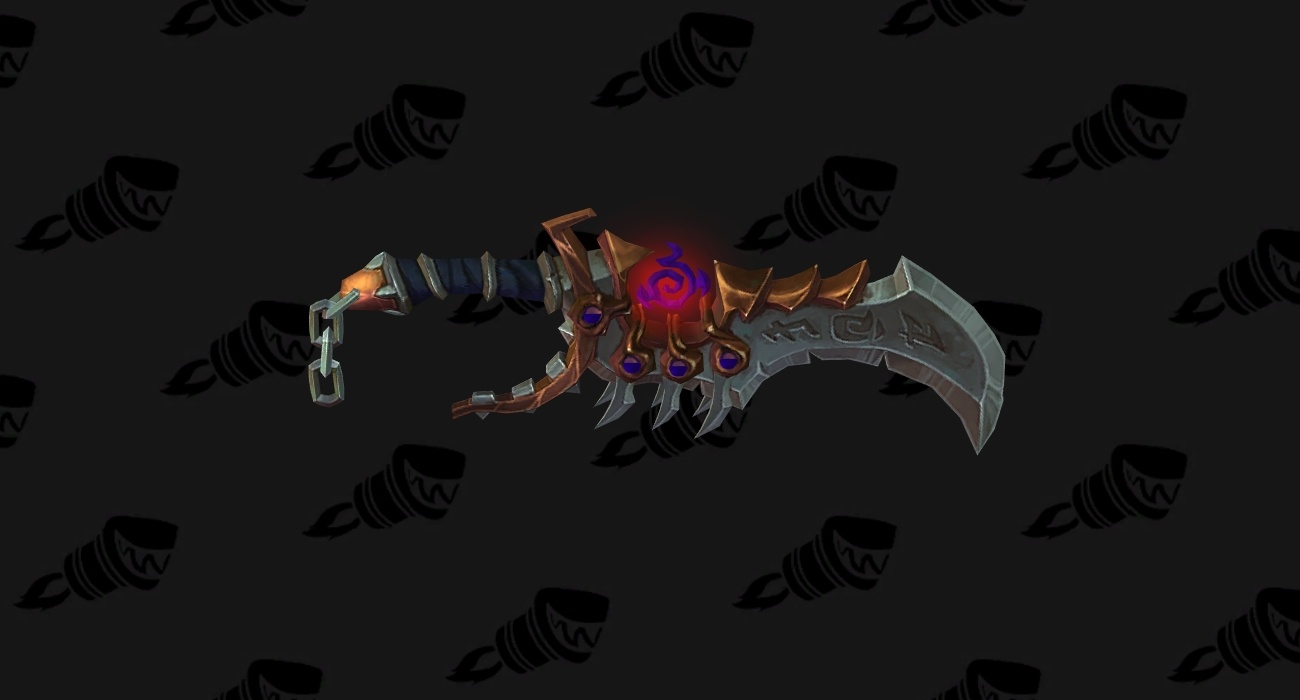Hi,
This is something that has bothered me for about 10 years now, but I’ve never complained before. Today however I saw a comment on MMO Champion that made me realize I’m not alone.
"So are they ever going to design swords and daggers that look sharp and not like chunky heaps of iron/stone?
I don’t know why I didn’t give up on that years ago
TBH most of these look like they could’ve been WoD or Cata blues. The “savage” style is really played out."
So here is the deal, up until Wrath, ie Vanilla and TBC, weapon models had blades that looked thin and sharp. They also had very reflective textures that made them look metallic.
Once wrath hit, there was a VERY clear change in art design for a lot of things. I don’t know if an artist was fired, quit, or if a new art lead was promoted or what, but suddenly weapons were MUCH more thick and textured in a way that they almost looked like stone.
In fact that particular art style has been highly prevalent in many aspects of the game ever since. I’m not complaining either, it’s good work, but maybe not so much for weapons.
So although these models/textures LOOKED GOOD and people liked them… they definitely don’t look like metal anymore, not typically.
One only needs to look at the outlaw rogue artifact swords for an example.
From a profile, what an amazing looking weapon.
But turn the blade on its edge and look how thick it is! How would this cut through stuff?
Weapons have now been this way for over a decade now, and I’m putting this out there to say “Hey Bliz, it’s okay to have some swords that look like real swords again”.
I’m going to post a few examples. You’ll have to look them up on WoWhead or something, I can’t post a lot of links.
Before Wrath:
Drake Talon Cleaver
Twinblade of the Phoenix
Notice they look thin enough to cut and metallic?
After Wrath:
Poisonfire Greatsword
(This sword is fairly thin, but looks like stone)
Cataclysmic Ggladiators Ggreatsword
(looks like stone AND thick, too thick to cut)
Militant Eexarchs Longsword
(this sword actually has some reflection, I was surprised, but look how thick it is!)
Anyway,
The point was I wanted to have a conversation about this topic and see people’s thoughts.

 My use of prehistory is way out of wack. Let me say between 9th and 10th century BC.? I was just trying to compare viking crucible steel (from Sri Lanka if I’am correct) and Japanese steel. My apologies.
My use of prehistory is way out of wack. Let me say between 9th and 10th century BC.? I was just trying to compare viking crucible steel (from Sri Lanka if I’am correct) and Japanese steel. My apologies.